Admin Note: These tips are my opinion, based on dozens of trips back to Japan since mission days in the 1970s. Suggestions are always welcome. If you click on a link that is outdated or have suggestions, please let me know using the 'Contact Us' link at left.
Click links below for your item of interest or just scroll down:
General Japan Travel Tips
Japan National Tourist Organization (JNTO) has a great website with good ideas and information to help you plan your trip, as well as to choose places to go and things to do. Japan-Guide is another good online reference. You might also consider a good old-fashioned paperback travel guide. I recommend Lonely Planet Japan, available at Barnes and Noble stores or online at bn.com or Amazon for about $30. Lonely Planet also has e-book guides. I find that Lonely Planet is a top choice for the broadest range of travelers, from the hitchhiker staying at hostels to the more well-heeled adventurer. Travel Caffeine also has some helpful Japan travel information.
Passport/Visa requirements Unless you're staying more than 90 days and as long as your passport is US, Canada or Australia, all you need is a passport. At arrival, your passport must be valid for the entire time you are staying in Japan. Stays longer than 90 days (workers, teachers, missionaries, etc.) need a visa obtained in advance. Note that all foreign visitors to Japan are photographed and (electronically) fingerprinted upon entry (when you show your passport/QR entry code at immigration at the airport.
Before you Go - Online Immigration & Customs Forms For a smoother entry upon arrival in Japan, visitors are encouraged to use the Visit Japan Web Site (no smartphone app is available) to register and digitally submit immigration and customs information online within 30 days before arrival. Have your passport and itinerary handy when you register online. Once successfully registered, a QR code is available to be scanned at entry (immigration and customs are the same QR code) as a great alternative to filling out and submitting paper forms. Hint: I registered online on my PC; once complete, I used a Smartphone browser to log into the same ‘Visit Japan Web’ site to display the QR Code and took a screen shot to show from my phone at arrival (worked well).
Optional Duty-Free QR Code. If you are a shopper, the site can also be used to create a tax exemption QR code for an easier tax-free shopping experience, but only at certain qualified stores (without the need to show your passport when shopping). If you want to try that, you'll need to upload your passport picture for that piece. If you buy at a store that can't accept the QR code, you'll need to show your passport for duty-free purchases.
When to Go .jpg)
|
Kakunodate (between Akita and Morioka) 24 Apr 2009
|
Japan has four distinct seasons. In my opinion, spring (March-May) and fall (September-November) are the best times to visit, but you might want to avoid one of Japan's biggest holidays, Golden Week --27 April to 6 May, when everyone has time off and many of them travel; trains are packed. Rainy season for most of Japan generally runs from early June through July, and in the Tōhoku (northeast) region, a couple of weeks later. Natsu Matsuri (summer festival) season (late July-early August) is stiflingly hot and muggy, but the festivals might be worth it. In winter, tourist areas are less crowded but it may be too cold and snowy for some.
How to get around
Trains are the way to travel anywhere in Japan. If you plan to travel even just a few long distances by train, you may want to consider a Japan Rail Pass. Please refer to the Train Tips section where rail travel is discussed in detail. Buses can take you pretty much wherever trains can't.
Highway Buses are also an option, and individual bus tickets purchased are generally cheaper than rail. However, since travel using JR Rail Pass makes unlimited, fast, long-distance, comfortable, daytime travel affordable, I personally have only supplemented rail travel by bus when local train service was limited. Between Koriyama and Iwaki, for example, there are only five trips daily over the mountains by JR rail (¥1,660 (or free with JR Pass); 1 hr. 38 min.), but buses (¥1,600; 1 hr. 28 min.) run more frequently. Regional bus companies publish their schedules on the internet; if you know the bus company name (Konan in Hirosaki, for example), you can Google search schedules, probably in Japanese for Tohoku. Tickets are usually purchased on a walk-up basis. Online train schedule sites such as Jorudan's Japan Transit Planner also include certain highway bus schedules, especially long-distance and overnight buses, and in particular to and from Tokyo.
Hitchhiking In the days before Rail Passes were available, my buddy Ken White and I hitchhiked pretty much the whole country north to south, from Hokkaidō to Kyūshū, catching a few train rides in-between.
|
|
|
"Tsuruoka hōmen--onegai" (going the direction of Tsuruoka-please)
|
Two important tips: First, you need a map/atlas that includes detailed highway on-ramp locations. In the 1970s, we bought our paperback (Japanese), 1:400,000 version, at a Japanese book store. You might try buying at Amazon or scrapping paperback altogether and use a smartphone online map app, assuming you've got data service in Japan. Second, you need to have supplies (poster paper, fat marker) to create destination signs to hold up (preferably written in Japanese). We found it much easier to be picked up with Japanese, rather than ro-maji (roman lettered) signs, perhaps it made the driver feel at ease to think they wouldn't have to speak exclusively English to communicate. Even though we thought we could write kanji pretty well, we usually asked a nearby Nihonjin (such as at a hostel) to write out the sign for us. There are even books on this subject - currently in print is Hitching Rides with Buddha (April 2006), by Will Ferguson, available on Amazon.com for around $14. (Mar 2024 price).
Taxis are lined up at every train and most subway stations, and are best used f.png) or the 'last mile' to your final destination after riding public transit, since they're rather pricey for just one person - more practical if you have up to four in your party. (jumbo taxis, 5-6 people, are rare, and are more expensive). A few taxis accept payment by credit card or by IC card - Kyoto seemed to have the most taxis that took credit cards. Logo stickers on taxi doors usually indicate accepted payment methods. When paying in cash, try to avoid paying small fares with large bills (e.g., ¥10,000 bill). Tipping is not done in Japan.
or the 'last mile' to your final destination after riding public transit, since they're rather pricey for just one person - more practical if you have up to four in your party. (jumbo taxis, 5-6 people, are rare, and are more expensive). A few taxis accept payment by credit card or by IC card - Kyoto seemed to have the most taxis that took credit cards. Logo stickers on taxi doors usually indicate accepted payment methods. When paying in cash, try to avoid paying small fares with large bills (e.g., ¥10,000 bill). Tipping is not done in Japan.
Here's a good taxi reference page. A couple of need-to-knows: A taxi's left rear door is usually opened and closed remotely by the driver; you usually don't open or close that door by yourself. If your destination is well-known (hotels, for example), you should be fine speaking English. Alternatively, give your driver the name / address of your destination on a piece of paper or - even better - point it out on a map, since the Japanese address system can be confusing even to local taxi drivers. Another alternative with taxi drivers is to use smartphone translation apps such as Google Translate.
Rental Cars are available at train stations and airports but are relatively expensive. Unless you're traveling to (rare) remote areas that aren't served by public transportation, it would be hard for me to recommend renting a car, especially with the issues of left-hand driving and navigation. If you do plan on driving, international driving permits (good for one year from issuance date) can be obtained for $20 at AAA before your departure.
Packing lightly is key if you're planning much travel within Japan. You'll need to pack lightly enough to easily carry/roll your own stuff everywhere. You can do laundry yourself at most hostels, hotels and some onsen, or have it done at larger hotels fairly inexpensively. Even for a 10-day trip, I recommend considering you do what I've learned to do: pack only what will fit into a airline-legal-size carry-on with wheels (the size that will fit into an airline overhead bin), plus perhaps a backpack or smaller carry-on. Plan to wash your stuff half-way through the trip in order to halve your packed quantities.
|
|
|
Coin lockers at Hakodate eki
(now most lockers are IC-card payment)
|
Assuming you're traveling on trains, be aware that large suitcases can't easily be accommodated. Overhead bin-size luggage will usually fit on the (not deep at all) storage rack above train seats. There is also usually a space behind the last row of seats on each train car where a larger case will fit. Only a few types of trains have limited luggage storage space at the ends of the cars.
Smaller luggage will also fit more easily into lockers located in train stations. I've used lockers many times (in recent years, most are rentable using Suica, not cash) to temporarily store stuff while I'm out exploring during the day. Lockers allow all-day storage until midnight from between ¥300-¥700, depending on the size.
Luggage storage is also possible at your hotel, both if you arrive early or usually even if you've checked out, usually at no charge. Japan also has an efficient luggage forwarding/delivery system that can be used from airports, hotels and even convenience stores to your destination in that city or between cities, with delivery time depending on distance, but usually within a day. Here's more luggage information and pictures that illustrate luggage on trains, lockers and luggage forwarding.
Shoes. Unless you enjoy bending over and untying and lacing your shoes often, it's wise to bring shoes that slip on and off easily. I wear Skechers. Many places in Japan – including ryokan (traditional inns), homes, temples, and many izakaya (pubs) and restaurants – require you to remove your shoes at the genkan (entrance) before entering.
Where to Stay and How to Reserve
Reserving accomodations has become easier in recent years on the Internet. Many Japanese-owned places don't take reservations more than three or six months in advance. If you're traveling 'on the fly' and arrive in a town without having booked a place to stay, the local eki (train station) may still have a travel information desk or tourist office that can help during normal business hours. Directions, maps, bicycle rental and even phone calls checking lodging availability are typical services provided there. If you arrive late at night, "walk-up" traffic to accommodations near an eki is always a possibility. Most all accomodations take credit cards, except hostels and some ryokan/onsen - be prepared with yen currency (genkin) just in case. Some ideas for options on where to stay:
Hostels If you are on a budget and are adventurous, consider hostels. You usually need to become a member in your own country to stay. Visit Hosteling International USA for information-a one year adult membership is $18. Japan Youth Hostels has an English website with good explanations, maps, rules and reservation info. Typical fees for these dormitory-type accommodations are $30/night--(~¥3,000). Evening and morning meals are also available for around $13 and $8 respectively (¥1,300 and ¥800, respectively). Sometimes they require you to bring your own sheets. Admin note: Japanese business hotels (discussed below) can be less than $60 in smaller cities and generally include better, private rooms (vs. dorm rooms), clean linen and breakfast - in my observation, they're generally closer to train stations than hostels.
Western-Style Hotels and Japanese-Style Business Hotels Check the travel guides mentioned above for specific hotels they recommend. Western-style hotels in big cities can be reserved online on chain websites and search engines such as hotels.com or booking.com - they generally have bigger rooms but are generally spendy. Hotels.com usually requires pre-payment. On the other hand, I also recommend you also consider Japanese business hotels, which have smaller (some would say cramped) rooms, but in my opinion are adequate and reasonably priced, even in big cities, and usually include or offer breakfast. I recommend three business hotel chains (sometimes they appear on hotels.com or booking.com): Route Inn (select English on their site) and Dormy Inn are two similar chains, both of which usually offer large Japanese-style o-furo bathing (daiyoku-jō, similar to onsen or sentō bathing), sometimes on rooftop floor (Dormy), in addition to showerbath prefab units in each room. If onsen-type bathing isn't important to you, consider Toyoko Inn, which has relatively new, clean and less expensive locations (due to no onsen-type bathing and slightly skimpier breakfasts), located near train stations throughout Japan.
Some Japanese reservation sites are in Japanese only, except JTB's Japanican, which is geared towards foreigners, and Rakuten Travel. Keep in mind the possibility of "walk up" traffic to hotels in smaller cities, especially in non-peak times--avoid golden week and local festivals. On some of my 'wingin' it' visits back to Japan, I've had no trouble getting rooms this way.
Ryokan (Japanese Inns) To sample the best of Japanese accommodations, you might want to consider at least one night in a ryokan. Ryokan don't always welcome foreign guests (Japanese language ability is a huge plus) and are usually more expensive than hotels. They also range from elegant to shoddy--consult the travel guides and hotel websites suggested above plus Japanican or JNTO for more information. Ryokan usually include Japanese-style dinner and breakfast in the per-person price, as well futon rather than beds, and traditional ofuro (bath). The travel information office in most eki (train station) is also a good source for information and reservations on the fly. Here's a webpage on onsen/traditional japanese bathing etiquette. Many onsen inns are really ryokan in a remote, mountain location in hot spring areas.
|
|
|
Streamside rotenburo (open air bath) at an onsen in Tohoku
|
Onsen (HotSpring) Ryokan, hotels and even sometimes hostels are found in hot spring areas. True Onsen refers to a naturally-occurring hot spring/mineral spa village, and the lodging would feature traditional Japanese bathing. There are thousands of onsen in volcanic-zone laden Japan. Some onsen areas are overbuilt, concrete and garish, but many (the ones I seek out) are charming and preserve the traditions of thatched-roof buildings and include rotenburo (outdoor bath), best located in a mountain and ideally, a streamside setting. As you can imagine, onsen accommodations are usually at the middle to high end of the lodging price range, but are, in my opinion, the ultimate in lodging and experience in Japan. As a reference, I recommend Japan's Hidden Hot Springs (1995, by Robert Neff), if you're serious about a traditional onsen experience. It's available for Amazon.com's kindle ($10). Though it's almost 30 years since this book was published in pre-Internet times, I've personally visited many of the top-rated onsen located Northern Japan in Neff's book and have not been disappointed. Some onsen now have websites or are members of Nihon Hitō wo Mamoru Kai (discussed below), but some can still only be reserved by telephone, and only in Japanese. Recently, some onsen have started to appear on JTB's Japanican website and even on hotels.com. Here's a webpage on onsen etiquette.
If you're really into onsen you can also consider Nihon Hitō wo Mamoru Kai (Japan Association of Secluded Hot Spring Inns-currently in Japanese only). Once you register online as a member (no charge), their site offers reservations to an exclusive assortment of small, traditional, sometimes rustic onsen inns. I've used the site for reservations a number of times but usually also call to confirm both the reservation and eki shuttle pickup details. (Admin note: they appear to have stopped maintaining their English version site since the pandemic, but if you use chrome as a browser for their webpage, it can translate into English)
Japanese Friend's Residence You may staying at the home of an acquaintence. If you served a mission in Japan, you probably remember the basic drill from countless visits to homes, so if you are traveling with others without such experience, consider giving a little training on shoes and genkans, small cramped spaces, o-furo technique, etc., before you arrive. Taking an omiyage (small gift/souvenir) is customary and would be a nice touch. I sometimes buy a Japanese omiyage at the train station of the city from which I just traveled - if I'm boarding a train in Sendai to travel to my host's city, for example, I might buy some gyuutan (beef toungue) jerky, all wrapped up and gift-size, before boarding the train.
AirBnb, VRBO These vacation rental by owner accomodations have appeared in Japan in recent years and may be a good option for you, especially if you're staying multiple nights in the same area, since most have minimum stay requirements. You may be able to save a lot of money, but be careful about location - the website descriptions may not give you adequate address or location information as to distance from train stations. Japan recently passed a law restricting such rentals unless local municipalities allow and license them.
Currency Exchange Each arrival airport has Japanese bank exchange windows that are excellent for currency exchange. They are usually conveniently located right as you exit into the public waiting areas. There is usually more than one bank there, so there is some competition, and I've found these bank windows to be quick and rates fairly priced (and way better than say, the US departure airport non-bank rip-off exchange booths - don't use those!). These same bank windows are found in Japan's airport departure wings for easy conversion back to your home currency.
ATMs If you have a US-based bank ATM (debit) card, you may use it at any Japan Post Office ATM to obtain yen currency. I recommend the Japan Post ATMs because they have an English display mode - fees are reasonable. Convenience Stores (7-11, for example) also have English-language mode on their ATMs. Commercial bank ATMs in Japan, in my experience, don't always have English display choices and may charge higher fees, so I avoid them.
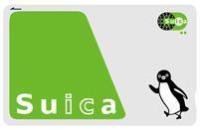
Prepaid IC Cards (Suica) Once you have yen in hand in Japan, you might want to seriosly consider obtaining a prepaid integrated circuit (IC) card. Suica, administered by JREast, and as such, is widely accepted in Tokyo and Tohoku. IC Cards of whatever brand (Pasmo, ICOCA, etc.) are interchangeble between systems throughout Japan. Suica is usable with a 'tap' on an IC reader for train, subway and bus fare, as well as for purchases. It allows travelers to bypass lines at ticket vending machines and otherwise alleviates fumbling with currency and coins when making purchases, including at vending machines, convenience stores and from in-train food/beverage carts. To use at automated subway or train turnstiles, holders tap Suica at entrance then tap again at exit; the automated turnstile exit will open and the proper fare is deducted from the card. 'Tap-on,' 'tap-off' systems such as JREast's Suica are common on rail systems around the world.
Black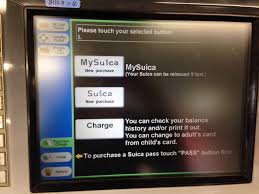 -colored Suica vending machines (English is available) located in JREast stations are used to obtain the card, and a ¥500 (~$) deposit is required. To add money/value to a Suica card (we say 'top off' or 'recharge' they say 'charge'), you insert yen bills or coins (no credit cards) using any green-colored Suica machine (more numerous than black) or black-colored Suica machines. You can also simply add money to the card at any convenience store that takes Suica. Obtain a refund (haraimodoshi) of unused value at the end of your stay at any JREast reserve ticket window at Narita or Haneda Airport. Here are a few webpages that explain Suica: Wiki, JREast, YouTube, How-to
-colored Suica vending machines (English is available) located in JREast stations are used to obtain the card, and a ¥500 (~$) deposit is required. To add money/value to a Suica card (we say 'top off' or 'recharge' they say 'charge'), you insert yen bills or coins (no credit cards) using any green-colored Suica machine (more numerous than black) or black-colored Suica machines. You can also simply add money to the card at any convenience store that takes Suica. Obtain a refund (haraimodoshi) of unused value at the end of your stay at any JREast reserve ticket window at Narita or Haneda Airport. Here are a few webpages that explain Suica: Wiki, JREast, YouTube, How-to
 JREast also sells a "Welcome Suica" tourist version of their Suica cards at Narita and Haneda airports, as well as at railway pass counters and tourist information centers at Tokyo’s major stations including Ueno, Shinjuku, Ginza, Tokyo and Shibuya. They feature white cherry blossom flowers on a red background as a representation of Japan’s flag, with the main benefit being that foreign visitors don’t need to pay the initial ¥500 deposit (discussed above), but they are only valid for 28 days from initial purchase. This exemption saves travelers from having to line up at JREast reserve ticket windows (at departing JREast area airports) to get the deposit (and any unused value on the card) refunded at the end of their trip. If you choose this tourist version, just make sure you use up all the yen on the card before departing Japan.
JREast also sells a "Welcome Suica" tourist version of their Suica cards at Narita and Haneda airports, as well as at railway pass counters and tourist information centers at Tokyo’s major stations including Ueno, Shinjuku, Ginza, Tokyo and Shibuya. They feature white cherry blossom flowers on a red background as a representation of Japan’s flag, with the main benefit being that foreign visitors don’t need to pay the initial ¥500 deposit (discussed above), but they are only valid for 28 days from initial purchase. This exemption saves travelers from having to line up at JREast reserve ticket windows (at departing JREast area airports) to get the deposit (and any unused value on the card) refunded at the end of their trip. If you choose this tourist version, just make sure you use up all the yen on the card before departing Japan.
There is a digital version, 'Welcome Suica Mobile App,' which JREast released in 2025. The app is valid for 180 days, for Overseas Visitors using iPhones to Japan in 2025. This app lets users issue and top up their digital Suica card without visiting a ticket office — even before entering the country. You can 'top off' (add funds) to the prepaid digital card using ApplePay. Non-reserved JR East Shinkansen tickets can also be purchased on the app. This will make it easier for visitors to purchase Shinkansen e-tickets, Limited Express tickets, and Green Car seats.
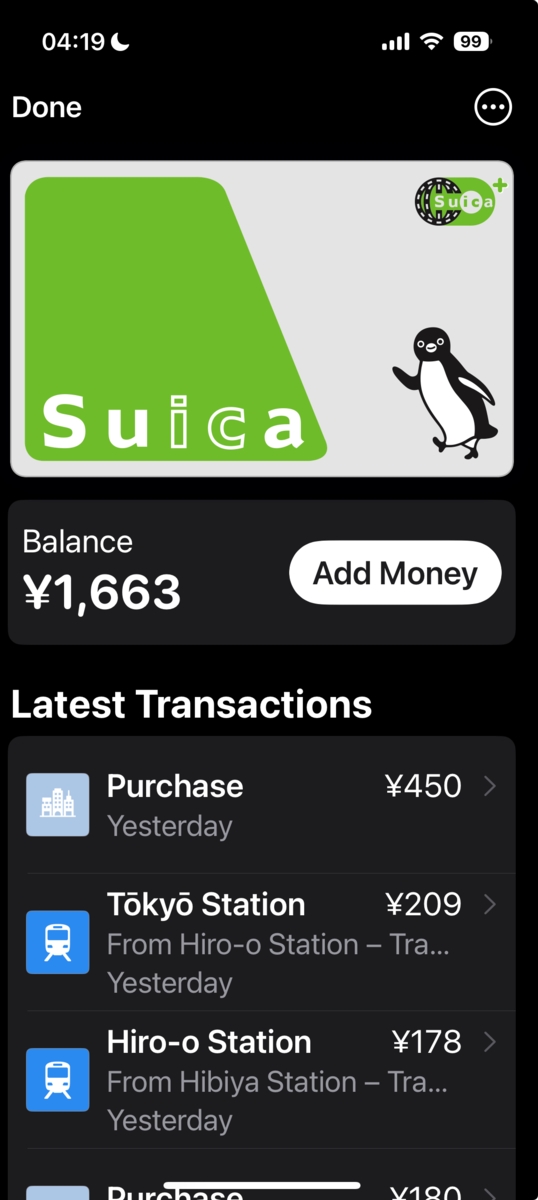 Suica ApplePay Option: The good news is that if you have an iPhone and use Apple Pay, open your wallet, click the plus and add Suica as a 'Transit Card' and fund it with with your Apple Pay funding source (I use Amex).
Suica ApplePay Option: The good news is that if you have an iPhone and use Apple Pay, open your wallet, click the plus and add Suica as a 'Transit Card' and fund it with with your Apple Pay funding source (I use Amex).
Once your Suica Transit Card is funded, you simply tap your iPhone at the turnstile or payment reader as you would an IC Card to tap to pay transit fares (trains, subways) or anything at conveninece stores (or any store that displays "Suica" sign) as described above. Your prepaid balance is displayed on your phone so you can easily see when to add funds as needed by clickling the "Add Money" button.
(Admin Note: this is good news to me as cash is required to fund non-digital IC cards (easiest at convenience stores), and I'd rather use Amex while riding on a train to get more SkyMiles using ApplePay's Suica 'Transit Card,' rather than messing with cash funding)
Credit Cards are accepted in hotels, restaurants and stores in Japan. Visa is the most widely accepted, and American Express is also fairly commonly accepted, in my estimation, more than 60% of the time. Foreign currency transaction fees for credit cards range from 0%-3%, but are usually 0% on travel rewards credit cards, which are built for spending all around the world.
Using Your Smartphone in Japan, WiFi Connectivity
Your Smartphone's cell signal should work in Japan if it has 3G or better capabilities. Older mobile phones are unlikely to work. Compatible phones may be used via international roaming (check with your mobile provider for details) or by using a SIM card from a Japanese carrier (unlocked handsets only). Many US mobile providers offer international plans or temporary service in Japan for a areasonable additional daily charge for data and calls-contact your carrier before you travel. Some plans include service with no changes or charges required - for example, on my T-Mobile plan (T-Mobile ONE), unlimited data and texting are already included at no charge, but voice calls are $.25 per minute; I just have to switch on my 'Data Roaming' on my iPhone while I'm in a foreign country. Of course, for most smartphones, using when connected to WiFi (see below) eliminates cellular data or phone charges.
Mobile Phones on Trains (CAUTION!). Talking on a mobile phone while riding in the coach sections on trains is NOT allowed; only between/outside cars on the 'deck' area. Even if you try to play "dumb gaijin (foreigner)" it is considered extremely rude; even the ultra-polite Japanese will give you glaring looks-don't do it!
WiFi Connectivity, Pocket WiFi is increasing in public areas in Japan. Most hotels and ryokan have WiFi, usually at no charge. You can also rent a 'pocket WiFi' that typically offer acceptable Internet access (via cell services) around Japan for up to 5 devices. Here's JNTO's page on WiFi connectivity. These Pocket WiFi devices can typically are relatively inexpensive to rent and.JPG) work remarkably well. You can pick them up at an airport at arrival and drop them off before departure.
work remarkably well. You can pick them up at an airport at arrival and drop them off before departure.
Electricity. Here's a guide on Electricity in Japan. To overcome non-grounded, non-polarized wall outlets found in Japan, an option is buying a short extension cord like this at even a convenience store after arrival. One side of the outlet slot is large enough to accomomdate polarized plugs, and the ground pin slides over the top. Alternatively, Amazon has inexpensive US to Japan plug adapters/cords that that accept US-style grounded 3-pronged plugs and include USB ports for charging your gizmos.
Tips on Tohoku, Tokyo, Kyoto, Himeji, Hiroshima, Sapporo
Prologue: All of the tips below assume you will have the JR Rail Pass, a real no-brainer must-have for foreign travelers traveling to just a few cities in my opinion. If you have corrections or suggestions for this section, Contact Us.
|
|
|
Koyo (fall colors) at Hirosaki Castle - Nov 2009
|
Tohoku
Readers who lived in Tohoku as may already have in mind what you want to see and where you want to go. Once in Tohoku, shinkansen and zairaisen (conventional rail) travel allows you to go pretty much anywhere within a few hours; using Sendai as a base makes sense. Some key tourist areas to consider visiting are: Matsushima, Yamadera, Hiraizumi, Hirosaki Castle, and Kakunodate. Natsu Matsuri (Summer Festivals-primarily Aomori, Akita, Hirosaki, Sendai, Yamagata), held in July and August, are also worth noting, but accomodations must be secured well in advance. A reminder how stinkin' hot and humid it can be in July and August, and with climate change, it's even hotter these days. Tohoku also has some of the best onsen (hot spring inns) in all of Japan, and, also in my opinion, are quintessential Japan, but are best enjoyed in other-than-summer weather.
Tokyo
To many, Tokyo is just another big city. Here are a few suggestions:
|
|
|
Tokyo's Shibuya Scramble crossing - Hachiko Exit of JR Shibuya station
|
-
At night
-
Shibuya Scramble Crossing – Hachiko exit of JR Shibuya eki.
-
Observation Decks - The Tokyo Metropolitan Building Observation Deck, 15 minutes walk from JR Shinjuku eki is free. Tokyo Tower or Sky Tree are two famous towers with observation decks for a fee. A new tower, Shibuya Sky is connected to JR Shibuya eki, but for afternoon-evenings must be reserved, up to 4 weeks in advance.
-
Early morning
-
Closed on both Sundays and National Holidays
-
Daytime
-
Imperial Palace
-
Ginza (shopping)
-
Akihabara (electronic stores)
-
Asakusa (Kaminarimon/Nakamise: shopping, omiyage (souvenirs))
-
Kamakura - outdoor buddha, allow a day due to distance. I prefer Todaiji's buddha in Nara (see below)
-
Tokyo LDS Temple - Hiroo station, Hibiya subway line
Kyoto
Kyoto is the cultural and historical heart of Japan and was the Imperial Capital until 1868. It's about 2.5 hours from Tokyo by Hikari bullet train, rideable by JR Rail Pass holders, which run at least once hourly. Due to its historic value, Kyoto’s treasured shrines, temples, numerous gardens and palaces were spared from air raids and during World War II. It is also a great base for day trips to Nara, Himeji (best castle in Japan) and Hiroshima (a must-see for historical value).
-
Favorites: Kiyomizu-dera, Kinkakuji, Nijo-jo, Heian Jingu, Sanjusangen-do, Fushimi Inari Taisha.
-
Hotel. Lots of hotel choices, but the closer you are to Kyoto Eki, the better, in my opinion.
-
JTB Tours - An easy way to get around to top venues with an English-speaking guide at a reasonable price. JTB Tours and Packages - decide for yourself what makes the most sense for you. I recommend the Kyoto Morning Tour (8:30 departure from Avanti's Sunrise Tours Desk (across from Kyoto Station Hachijo Exit) (only on weekdays, since Imperial Palace closed Sat-Sun), and I also recommend the Kyoto Afternoon Tour (13:30 departure from Avanti's Sunrise Tours Desk (across from Kyoto Station Hachijo Exit))
-
Nara - The only ‘must see,’ in Nara, in my opinion, is “Todai-ji” "Daibutsu-den" where the
great Buddha is housed, but is easy to navigate on your own, vs. a tour. It makes a nice full afternoon when the light is better, perhaps after a Kyoto Morning Tour (discussed above). Using JR Rail Pass, you can ride a JR ‘rapid service’ commuter type train that takes only 44 minutes from JR Kyoto to JR Nara. Todaiji is about 5 minutes by taxi from JR Nara; allow about two hours there. We usually walk back to JR Nara station (vs. taxi) – via the shoten (covered shopping stree) near the Kintetsu Nara eki, it’s not too crazy and kind of charming. After ‘Rapid Service’ train back to Kyoto, Porta Mall (underground mall that includes many restaurants) out the Kyoto eki’s Karasuma exit side, has countless options for dinner.
Himeji
|
|
|
Himeji-jo - you can climb up to top on steep samurai stairs
|
I recommend Himeji-jo (Himeji-castle). It’s the best remaining Shogun-era castle in Japan. Allow 2-3 hours to explore the grounds and the extensive castle buildings. JR Himeji is
less than one hour by Shinkansen from JR Kyoto (opposite direction from Tokyo; west past Shin-Osaka), and the castle is a comfortable walk from the Himeji JR station. Note for JR Rail Pass holders: only a handful of Hikari run west from Kyoto; you may have to ride a Haruka rapid train heading towards the Kansai airport as far as Shin-Osaka (30 min.), then switch to a Sakura, which run west from there (30 min.). There is currently an 7:20 am Hikari that runs directly from Kyoto to Hiroshima, with a stop at Himeji at 8:03am. For train planning, consult apps/directories as discussed in Train Tips below, and click on the checkbox for JR Pass users to exclude Nozomi trains.
Hiroshima
From Kyoto, a good day trip is to Hiroshima, less than two hours by Shinkansen, even if a connection is required at JR Shin-Osaka.
|
|
|
Hiroshima genbaku do-mu; part of grounds of museum
|
I recommend the Hiroshima Peace Memorial Museum, which is less than 15 minutes' taxi ride from JR Hiroshima. The historical impact of the museum can't be described in words. I've visited multiple times, and all the friends I've guided or recommended to visit agree it's a sobering must-visit. Allow at 2-3 hours minimum at the museum and park. It can get very crowded. If you decide to go early and return late, you could consider also squeezing in Miyajima, the famous red torii and Itsukushima floating shrine, about 30 minutes by train from JR Hiroshima station. Allow 2-3 extra hours. It's a bit touristy, but.... famous.
Note for JR Rail Pass holders: there may be limited Hikari each morning from Kyoto to Hiroshima: 7:20, 8, and 8:23. As described above, there are more options riding Sakura from Shin-Osaka. For the return trip, Sakura bullet trains run frequently to Shin-Osaka; connect there for the short trip to Kyoto. You may also consider upgrading to Nozomi for a nominal charge.
Sapporo
RMs with a couple extra days on their hands (and on their JR Rail Pass) may want to consider riding the shinkansen from Shin-Aomori through the seikan tunnel to ShinHakodate-Hokutou (1 hr.) on to Hokkaido, where you can connect to a tokkyuu express conventional-line train (e.g., much slower than a shinkansen) to Sapporo (~3.5 hrs.) Flights to Sapporo are also an option - usually less than $100US one-way. Here's some top Sapporo attractions. Famous food dishes are of course, Sapporo Ramen (shops everywhere) and Genghis Khan/Jingisukan (an awesome lamb and vegetable dish that you cook yourself - shops everywhere, but my favorite is Sapporo Beer Garden (even if you don't drink beer), where Jingisukan is their specialty. RMs may be interested in Site details on visiting the Sapporo LDS temple here. The annual Yuki Matsuri (snow festival) is typically held early February each year.
Eligibility Japan's rail system is one of the world's finest. "JR" refers to Japan Railways Group, the former Japan National Railways (JNR) nationwide government-owned railways--now six separate regional privatized companies which cooperate with each other. Travelers on "temporary visitor" entry status to Japan should consider purchasing a Japan Rail Pass and will likely save money if they plan to travel by rail throughout Japan. Visitors entering Japan on visas for stays longer than 90 days (e.g., employees, missionaries, students, and English teachers) are, unfortunately, not eligible. Japan Rail Pass is available for 7, 14 or 21 consecutive days from the day you designate when you pick the pass up in Japan.
former Japan National Railways (JNR) nationwide government-owned railways--now six separate regional privatized companies which cooperate with each other. Travelers on "temporary visitor" entry status to Japan should consider purchasing a Japan Rail Pass and will likely save money if they plan to travel by rail throughout Japan. Visitors entering Japan on visas for stays longer than 90 days (e.g., employees, missionaries, students, and English teachers) are, unfortunately, not eligible. Japan Rail Pass is available for 7, 14 or 21 consecutive days from the day you designate when you pick the pass up in Japan.
Rail Passes may be purchased online starting 30 days prior to first intended use in Japan, and using the only official JR Rail Pass dedicated site, japanrailpass.net/en/, available 6am-1150pm JT (other sites are third-party and don't allow online reservations, so I don't recommend them). You enter your passport information online at purchase and you pick up the actual pass up after arrival in Japan at a travel service center after showing the "temporary visitor" stamp in your passport.
Japan Rail Pass Value A JR Rail Pass allows you virtually unlimited reserved seat travel on all of the JR Group rail lines, including all Shinkansen (Bullet Trains) except Nozomi and Mizuho trains, the fastest Shinkansen running between Tokyo west to Osaka and Kyushu, respectively, which trains require additional incremental fares for each use for Japan Rail Pass holders. Hikari and Sakura Shinkansen run these same routes at no cost to JR Rail Pass holders, but make a few more stops. To demonstrate Pass value:
| Individual Shinkansen Ticket Purchase - 2 trips |
versus |
7-day Japan Rail Pass (Ordinary Seats) |
| Tokyo to Sendai, round trip |
¥22,820 |
SEVEN (consecutive) days of unlimited reserved seat travel on JR Lines, anywhere, including Shinkansen (except 'Nozomi' or 'Mizuho,' which require additional fares for each) ride) =
|
| Tokyo to Kyoto on 'Hikari," round trip |
¥27,700 |
| Total |
¥50,520 |
¥50,000 |
Conclusion: A Japan Rail Pass makes sense to purchase if you plan to travel from Tokyo to even just two destinations (these are each 1.5-2.5 hours of travel).
Regional JR Passes If your travel will be restricted to only one region, consider buying a regional JR pass. For example, JR in Tōkyō area and northeast to Tōhoku all falls within the JR East region. JR East Passes (Tōhoku) are 5-day consecutive-use passes available for ¥30,000, and are bought online on this JR East Pass webpage, where once purchased, advance seat reservations may also be made for only JR East trains. It might also make sense to buy a JR East pass for the first part of your travels (Tōkyō, Tōhoku), and an all-Japan JR Rail Pass for travel elsewhere that follows. Please note that JREast does not offer Green car passes.
What about a Green Car Pass? Consider choosing a pass for "green car" (comfort class) over the ordinary JR Rail Pass. For a 40% incremental cost, you then can travel in the green car available on all but local trains. Green cars are generally more quiet, have wider seats, and may be easier to reserve than ordinary seats. Around Tokyo, many commuter trains have green cars as well.
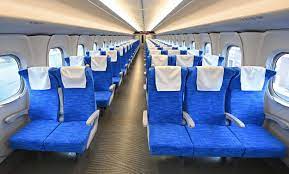 |
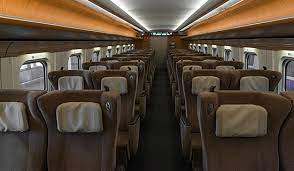 |
| Shinkansen Ordinary Seat Configuration (2x3) |
Shinkansen Green Car Seat Configuration (2x2) |
Prices for Japan Rail Passes
Rail Passes should be bought online less than 30 days prior to intended use in Japan, using the only official JR Rail Pass dedicated site, japanrailpass.net/en/ (other sites are third-party and don't allow online reservations, so I don't recommend them). You enter your passport information at purchase.
| Type: |
Green |
Ordinary |
| Duration |
Adult |
Child 6-11 |
Adult |
Child 6-11 |
| 7-day |
¥70,000 |
¥35,000 |
¥50,000 |
¥25,000 |
| 14-day |
¥110,000 |
¥55,000 |
¥80,000 |
¥40,000 |
| 21-day |
¥140,000 |
¥70,000 |
¥100,000 |
¥50,000 |
Within one month of online purchase, pick-up your Pass in Japan at a JR ticket office in Japan by presenting the passport you entered online to purchase. Your passport eligibility as 'temporary visitor/stay for sight-seeing' will be confirmed.
Boarding Trains with JR Pass

Once you've received the actual pass after arrival in Japan (depicted above) JR Pass users go through automated station turnstiles to gain access to track areas, and it also gives them the ability to make seat reservations either at at ticket machines (see Reservations section below), or online and pick up at automated ticket machines, some time before you board your train.
Note: If you reserve seats, you'll receive a separate, same sized reserved seat ticket, but don't insert it into the automated turnstile, only insert your JR Pass, which gets you access to the track area.
Your JR Pass is all you need. Simply insert your JR Pass into the slot at unmanned, automated turnstiles, but don't forget to retrieve it when it pops up on the other side, since they are not replaceable!


(the X at left above is showing NOT to also insert your reserved seat ticket into the automated turnstile. The only exception to this is when you pay extra to upgrade before riding a Nozomi or Mizuho train-they ask you to stack that reserve seat ticket with your rail pass at ticket gate.)
Reserving Shitei Ken (Reserved Seat Tickets) - Three Options up to 30 days in Advance:
Most trains (other than local, commuter-type trains) have both reserved and non-reserved seats. Your Japan Rail Pass entitles you to reserved seats, so why not reserve them? Reserving seats in advance gives you peace of mind - I've found in recent years that fewer open seats are available, so I definitely recommend reserving seats in advance. As mentioned elsewhere, with a Japan Rail Pass bought on the official JR Rail Pass dedicated site, japanrailpass.net/en/ you can reserve seats online before you leave for Japan (and pick up the reserved seat tickets once in Japan). WARNING: Unless your itinerary is set in stone, I recommend waiting to pick up the reserved seat tickets for a specific train until you're sure you want to ride that specific train. Once you pick up a reserved seat ticket, the only place you can cancel/change it is at a Ticket Office, which may have a line.
Option 1: Online Reservations (allows changes/cancellations before you pick up): If you purchased your pass online usi ng JR's dedicated website described above, you can also book reserved seats, up to 30 days in advance of the train travel date, on the same website. Once in Japan, before you board your train, pick the reserved seat ticket up at JR stations using a JR Automated Ticket Machine. Select "receive reserved seat ticket reserved via website," scan the JR Rail Pass QR code (or key in your pass number), and key in your passport number. The advantage of online reservations is that you can cancel a previous reservation online and change to another specific train online, so long as you cancel before the train departure time.
ng JR's dedicated website described above, you can also book reserved seats, up to 30 days in advance of the train travel date, on the same website. Once in Japan, before you board your train, pick the reserved seat ticket up at JR stations using a JR Automated Ticket Machine. Select "receive reserved seat ticket reserved via website," scan the JR Rail Pass QR code (or key in your pass number), and key in your passport number. The advantage of online reservations is that you can cancel a previous reservation online and change to another specific train online, so long as you cancel before the train departure time.
Option 2: At a Ticket Office (the old fashioned way): This alternative might be preferable for those who are unfamiliar with the rail system and require guidance on certain details, or those who might wish to make several advance reservations at once. Show your Pass at any JR station Travel Service Center or reserved seat ticket window, called "Midori-no-madoguchi," or at a travel agen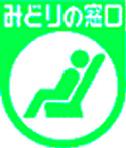 cy in Japan. The green sign at left (with figure in reclining seat) designates a reserved ticket office. Due to automation, many smaller stations don't have a manned reservation window, but will have a "video teller" type of assistance service on ticket machines.
cy in Japan. The green sign at left (with figure in reclining seat) designates a reserved ticket office. Due to automation, many smaller stations don't have a manned reservation window, but will have a "video teller" type of assistance service on ticket machines.
Seat reservations may be difficult to obtain for travel during traditionally heavy travel periods. (29 December - 5 January, 29 April - 5 May, 13-15 August). Most Japanese and many Pass users wait to obtain reserved seats until they arrive at the station, since the frequency of trains in Japan is relatively high. However, nowadays, more and more seats are reserved well in advance, especially by tourists.
Rather than making multiple trips to a ticket office in Japan, if you have an extensive itinerary that is pretty well set, you can (1) Review train schedules (see below) and decide which trains you want to ride, (2) Write the itinerary information on paper as depicted below, and (3) submit the request sheet with your Pass at the reserved ticket office/window. The format shown below is similar to the Japanese request sheet and should help facilitate your requests and minimize language barriers.
|
Mo
|
Day
|
Train Name
|
Dep City
|
Dep
|
Arr city
|
Arr
|
|
10
|
31
|
Narita Express 40
|
Narita Airport
|
17:16
|
Tokyo
|
18:18
|
|
10
|
31
|
Hayabusa 103
|
Tokyo
|
18.56
|
Sendai
|
20:28
|
|
11
|
01
|
Hayabusa 13
|
Sendai
|
11:54
|
Shin-Aomori
|
13:29
|
|
11
|
01
|
Tsugaru 6
|
Shin-Aomori
|
13:43
|
Hirosaki
|
14:10
|
Option 3: At a JR Station Automated Ticket Machines: Ticket machines may be helpful in view of the long and slow-moving queues that one encounters at ticket offices during peak times. Here's a step-by-step guide to using Ticket Machines to reserve seats AND pick up your reserve ticket with your JR Rail Pass and passport number in hand.
Using Reserved Seat Tickets (Shitei ken)
An example shitei ken (reserved seat ticket) appears below. (Actual size is a little less than 3 inches by 2 inches). Key ticket information is translated/notated in red. These are largely unchanged in size and purpose over the past 40 years. Since you DON'T insert them into the automated ticket turnstile, you really just refer to them to find your car and seat (which, car, row and seat). I keep them in my iPhone case.
.jpg)
Some of the information may appear in
ro-maji or in English, but don't count on it, so learning the
Kanji for names of cities you'll be traveling to becomes helpful. Use the reserved seat ticket to determine your car and seat number, including where to stand on the train platform. You DO NOT insert the reserved seat ticket to get through the gate (just your Pass), but once seated and the train is moving, have your reserved seat ticket handy in case a conductor comes around asking to inspect everyone's ticket. You usually only need to show the conductor the reserved seat ticket and not the Pass. (He can tell by price of '¥***' that you're a pass holder.) Note: In nearly all of JR East and West territory, train conductors rarely check for tickets unless their handheld electronic device shows them a seat is occupied for which a reserved ticket has not been purchased. Pre-pandemic other JR companies did not seem to be as sophisticated and checked for reserved seat tickets more often.
Platform Navigation On each train platform (noriba or ho-mu), there are small signs that designate where specific car numbers stop on the platform. These signs are usually at eye level or are painted right onto the platform at "shoe level." You need to know the name and departure time of the train you intend to ride; for example, "Komachi 9:14," as well as your car number. This information appears on your reserved seat ticket. These signs are now electronic in all but the smallest stations (see examples above).
For Shinkansen, it is also helpful to know the total number of cars on the train, for example, a 17-car train, which information can usually be found on electronic overhead displays in the stations near the escalators up to the Shinkansen track level (refer to the picture above, which is a non-electronic example from a smaller station).
The platform car number designation signs will either list specific train names (Yamabiko & Tsubasa 142-bottom in picture above right), or total cars (10 ryou, 17 ryou), then the car number for that "standing" spot. Train cars are consecutively numbered, so you can ride the optimal escalator up to the platform, then make your way up or down the platform until you find the place to wait for the car number listed on your reserved seat ticket. Also remember that anyone will help if you ask.
Airport-JR Train Navigation
Haneda Airport (HND)
There are two major international airports in Japan: Tokyo (Narita) and Osaka (Kansai). In 2011, Tokyo's domestic airport, Haneda, began serving a limited number of international flights for foreign airlines-Delta, for example, has limited service to Japan and only uses Haneda; Japan Airlines and All Nippon Airways have more numerous landing slots. Haneda is just a 15-20 minute monorail or cab ride to downtown Tokyo, so the discussion below focuses on the other international airports that are located somewhat distant from the cities they serve. Haneda's monorail, the 15-minute route from Haneda Airport to JR Hamamatsu-cho station, honors JR Rail Passes.
Narita Airport (NRT) to Tokyo Station (and beyond)
There are two train lines (JR and Keisei) that go from Narita airport (basement stations) to the Tokyo area, which is 40+ miles distant. Of course, there are also limo and bus services available from Narita to Tokyo hotels and also long-distance bus routes, but this discussion assumes you are using JR trains to take advantage of the JR Rail Pass. JR prices without the pass are about ¥3,000 one way. (Keisei's Skyliner costs about ¥2,500 one way, and is faster (45 minutes vs. 60 minutes), but takes you to Keisei Ueno station, about five minutes walk from JR Ueno station.)
JR's Narita Express (N'Ex) takes about one hour from Narita Airport to Tokyo station. Most N'Ex trains are nonstop, and all seats are reserved. During peak times, trains leave every 30 minutes, and hourly otherwise. After stopping at Tokyo station, a portion of the cars on the N'Ex train continue on to other Tokyo metropolitan area stops such as Shinjuku & Ikebukuro or Yokohama & Ofuna.
If your plans are to change trains at Tokyo station for points beyond, I highly recommend you plan ahead and obtain reserved seat tickets for the next leg(s) of your trip while you are still at the travel service center at the airport. Pay attention to the transfer time allowed between trains in Tokyo. Natives could negotiate a transfer in less than ten minutes, but you should allow at least 20 minutes the first time--the Tokyo station is huge, crowded and one can easily become turned around--ok, lost, there. Since the Tokyo station is so huge, if you're going south towards Kyoto on a Hikari bullet train after traveling from Narita on JR's Narita Express, I usually recommend riding N'Ex to Shinagawa, where changing to the Shinkansen is much easier and straightforward.
From the Tokyo station you can board a JR train to take you virtually anywhere in the country. Tokyo station expanded over the years by adding tracks tunneled underneath the original station and on elevated platforms above the original station. Narita Express arrives in 2B basement of Tokyo station, and the Shinkansen departs clear on the opposite side of the eki from elevated tracks, so you're riding a few escalators and walking through a maze of people, past all the local train lines. It's a bustling place. Navigation is easy, though, if you just look for overhead signs that are color coded. Bullet trains going north and east (JR East - Touhoku, Jouetsu, Hokuriku and Nagano Shinkansen) are designated with a FOREST GREEN color, whereas the bullet trains going south, towards Osaka/Kyoto( JR-Tokai - Tokaikdo/Sanyo Shinkansen) are ROYAL BLUE.
 |
|
Typical example of overhead navigation signs you'll see in the 2B basement level of Tokyo station upon arrival from Narita Airport via the Narita Express. This sign is directing you upstairs to (from left to right) Tokyo area local lines, Shinkansen lines and subway lines (circles at far right)
|
Once you've navigated upstairs passed through the separate Shinkansen turnstile, consult the overhead displays and information signs as explained on the previous page to determine your track number and where on the platform you should stand. Train name, car number, etc. are printed on your reserved seat ticket to assist you. If you do become lost, you can always ask for assistance by showing someone your reserved seat ticket-Japanese people are usually very willing to assist helpless foreigners.
Kansai Airport (KIX)
There are also two train lines that serve the Osaka area's Kansai Airport, JR and Nankai. JR's express train between Kansai Airport and JR Shin-Osaka station is called Haruka, which departs every 30 minutes. All seats are reserved. The cost is about ¥2,500 each way--free, of course, if you've exchanged your JR Rail Pass voucher. The average travel time is about 50 minutes. Haruka continues on past Shin-Osaka to Kyoto, 25 minutes travel time, for an additional ¥1,000. (Total ticket price of about ¥3,500 if you didn't exchange your Pass). The private (non-JR) Nankai line is more suited to locals in my opinion.
The Kansai airport train station is about a six minute walk from airport terminal's third floor level. There you'll find a travel service center located adjacent to the turnstile area where you can exchange your JR Rail Pass voucher and/or obtain reserved seat tickets.
Shinkansen Lines Map
Online timetables give you options for planning your travels in advance. Once you arrive in Japan, a printed (old-fashioned) jikokuhyou or a Smartphone App, discussed below, might make sense.
Online Schedules. For both pre-trip and in-Japan planning purposes, I recomm

end Jorudan's
Japan Transit Planner. This intuitive webpage allows Ro-maji searches for specific city points, dates and times, and then displays multiple suggested choices, with Japanese also appearing in the results display. It allows narrowed search parameters at the top of the main page for Rail Pass Search, helpful if you'll be using a JR Pass. The JR Rail Pass is not valid on
Nozomi or
Mizuho (Kyushu) trains without extra charges, but is valid without extra charge on all other
Shinkansen. This search engine webpage is far more user-friendly than JR Group's Cyberstation discussed below.
Train Schedule Apps for Smartphones. Jorudan has a smartphone app using the same database described above for both iOS and Android.
Japan Transit Planner is the most downloaded transit guide in Japan and includes bus and airplane routes. I suggest to download it to your phone before you go to practice using it. Before going to Japan, I suggest arranging international data plan service to be able to use this app for your smartphone. My T-Mobile Plan has international data included and works very well. Alternatively, if you obtain a
Pocket WiFi device, your smartphone can access the Internet anywhere in Japan.
Telephone Assistance English-language assistance and travel information is available during working hours on the Japan Travel Phone, toll-free outside of Tokyo and Kyoto 0088-22-4800. Local call in Tokyo 03-3201-3331 or Kyoto 075-371-5649. JR has an English-language hotline in Tokyo at 03-3423-0111, open weekdays 10 AM to 6 PM.
Japanese Language Printed Schedules. If you can read Japanese, paperback
jikokuhyou (timetables) are still published monthly in Japan and sold just about wherever newspapers are so

ld, and range in price from about
¥400 for a small print version to about
¥1,000 for the deluxe full-sized version. As people go digital, I've seen less and less of these for sale in recent years. I've purchased them at kiosks located adjacent to the JR East Travel Service Center at both
Narita and Haneda airports. The
jikokuhyou are only in Japanese, but with a little practice, relatively easy to use if you know the
kanji for main cities. The full size version, which all train station ticket offices keep on hand, also lists cities in
hiragana. Hints for reading
jikokuhyou are discussed below. Another interesting thing about
jikokuhyou is that virtually
all public transportation, including buses and domestic air routes are listed in them. JR Train schedules usually remain unchanged for one year, from April 1 to March 31 of the following year (this interesting fiscal year is also almost always followed by companies and schools in Japan.) Usually the only exception is seasonal tourist trains that are added to the base schedules.
JR Group's web site, called
Cyberstation (Japanese and English) includes seat availability inquiry (limited to one month in advance), real time schedule inquiry (similar to US Airline arrival information) and fare information. You really need to know the train route names (
Touhoku Shinkansen, for example) to effectively use this site, which is only availble from 6 am to 11:50 pm, Japan Time. Seat availability is generally only a worry during peak holiday periods, such as: Golden Week, 29 April to 6 May, Obon (11-20 August), and New Years (28 December to 6 January).
Reserve versus 'On The Fly' If you're a real adventurer, have flexible timing, and especially if you're not traveling during a peak travel period, with JR Rail Pass in hand, you can freely board any JR train without charge (except
Nozomi & Mizuho - JR Rail Pass holders must ride
Hikari or
Sakura, respectively, for no extra charge) and sit even in an empty reserved seat. If a conductor comes around, just show him your Pass. He may move you to a reserved seat that he knows will not be filled on a subsequent stop. If you have destinations in mind, you can obtain reserved seats and assistance in advance as
discussed above.
Japanese Published Timetables--How to Read.
Below is a page from the large deluxe
jikokuhyou (timetable) mentioned above. These paperback books are largely unchanged since pre-Internet days. The
jikokuhyou is divided into sections of train routes, such as the
Touhoku Shinkansen shown below. Maps of Japan rail lines with page references are found at the front of the
jikokuhyou. You should note that the large deluxe version (about
¥1,000) is the only
jikokuhyou that lists city names on the first page of each section in
hiragana (as shown below); all smaller versions list them in
kanji only. These full-size
jikokuhyou are the kind that are found in each
eki (train station) on the desks near the
midori-no-madoguchi (green window/reserved ticket) counters to assist riders in choosing which train to reserve. They are also sold at bookstores and travel agencies. See also
Obtaining Reserved Seat Tickets.
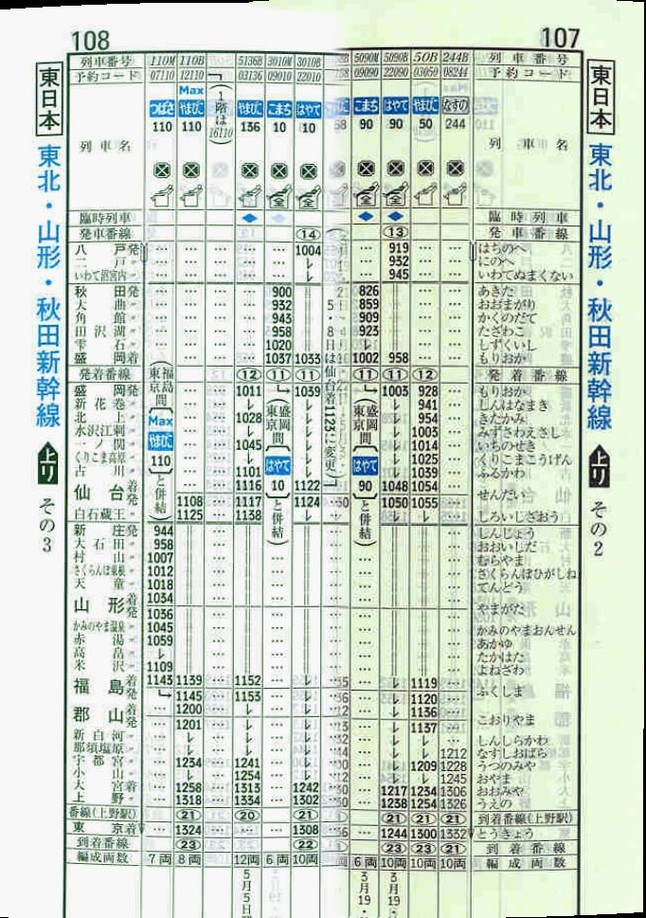
Train names are at the top of each column. Hayate 90 is the one we'll look at. It is the third column over from the right-hand margin. Military time is used in Japan.
Hayate 90 departs Hachinohe at 9:19 AM and arrives in Tokyo at 12:44 PM.
During a 5-minute stop in Morioka, the Akita Shinkansen Komachi 90 links up with Hayate 90 and the combined train continues to Tokyo.
The name of each station is displayed in Kanji down the margin. (Hiragana, shown on the right-hand margin here, is only shown in the largest size version of jikokuhyou)
 Station Names
Station Names All rail and subway stations display station names in both Japanese and Roman letters on their platforms. A station's name is in the center of the signboard, in large letters; the names of the previous station and the next station are at the bottom of the signboard, in smaller letters.
Station Displays Most stations have electronic displays for each track that show departure times and train names. Shinkansen and large city station displays alternate between English and Japanese, as shown in the shot at right that announces the next three departures on Tokyo Station's track 22.
Onboard Announcements Announcements on all
Shinkansen and most
tokkyuu (limited express trains) are pre-recorded in both Japanese and English. Announcements generally give information about amenities and stops. You can also find electronic sign boards in most green cars (first class) that give news, weather, and stop information in both languages. About three minutes before a train stops, music plays and the stop and exit side (right or left) are announced. Most English language pre-recorded announcements use a British-born voice actress, and are easy to understand. If the conductor makes supplemental announcements, he or she rarely tries English.
Onboard Train Mobile Phone Use (Don't!) Mobile phone (
keitai) use is allowed on trains in Japan, but
never inside a car in the seating area -
only in the 'deck,' the space between cars. Using a mobile phone while seated on a train is considered extremely rude and doing so will result in unhappy glares and stares.
Link to Top
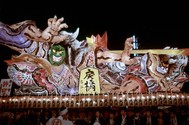
.jpg)
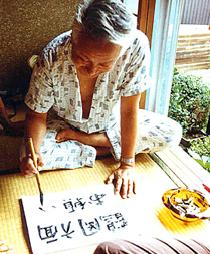
.png) or the 'last mile' to your final destination after riding public transit, since they're rather pricey for just one person - more practical if you have up to four in your party. (jumbo taxis, 5-6 people, are rare, and are more expensive). A few taxis accept payment by credit card or by IC card - Kyoto seemed to have the most taxis that took credit cards. Logo stickers on taxi doors usually indicate accepted payment methods. When paying in cash, try to avoid paying small fares with large bills (e.g., ¥10,000 bill). Tipping is not done in Japan.
or the 'last mile' to your final destination after riding public transit, since they're rather pricey for just one person - more practical if you have up to four in your party. (jumbo taxis, 5-6 people, are rare, and are more expensive). A few taxis accept payment by credit card or by IC card - Kyoto seemed to have the most taxis that took credit cards. Logo stickers on taxi doors usually indicate accepted payment methods. When paying in cash, try to avoid paying small fares with large bills (e.g., ¥10,000 bill). Tipping is not done in Japan.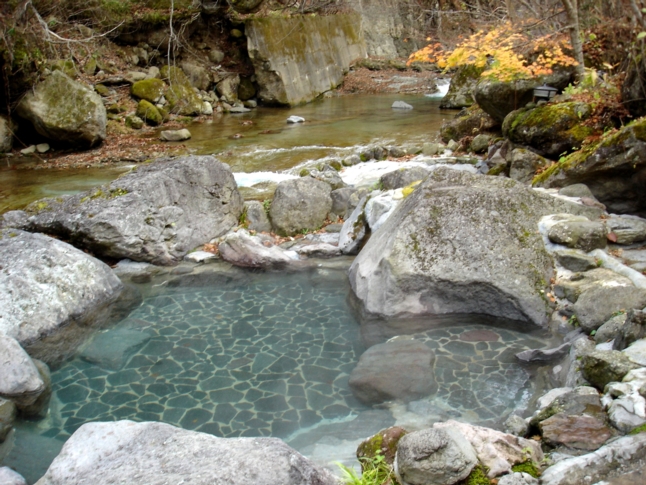

 -colored Suica vending machines (English is available) located in JREast stations are used to obtain the card, and a ¥500 (~$) deposit is required. To add money/value to a Suica card (we say 'top off' or 'recharge' they say 'charge'), you insert yen bills or coins (no credit cards) using any green-colored Suica machine (more numerous than black) or black-colored Suica machines. You can also simply add money to the card at any convenience store that takes Suica. Obtain a refund (haraimodoshi) of unused value at the end of your stay at any JREast reserve ticket window at Narita or Haneda Airport. Here are a few webpages that explain Suica: Wiki, JREast, YouTube, How-to
-colored Suica vending machines (English is available) located in JREast stations are used to obtain the card, and a ¥500 (~$) deposit is required. To add money/value to a Suica card (we say 'top off' or 'recharge' they say 'charge'), you insert yen bills or coins (no credit cards) using any green-colored Suica machine (more numerous than black) or black-colored Suica machines. You can also simply add money to the card at any convenience store that takes Suica. Obtain a refund (haraimodoshi) of unused value at the end of your stay at any JREast reserve ticket window at Narita or Haneda Airport. Here are a few webpages that explain Suica: Wiki, JREast, YouTube, How-to JREast also sells a "Welcome Suica" tourist version of their Suica cards at Narita and Haneda airports, as well as at railway pass counters and tourist information centers at Tokyo’s major stations including Ueno, Shinjuku, Ginza, Tokyo and Shibuya. They feature white cherry blossom flowers on a red background as a representation of Japan’s flag, with the main benefit being that foreign visitors don’t need to pay the initial ¥500 deposit (discussed above), but they are only valid for 28 days from initial purchase. This exemption saves travelers from having to line up at JREast reserve ticket windows (at departing JREast area airports) to get the deposit (and any unused value on the card) refunded at the end of their trip. If you choose this tourist version, just make sure you use up all the yen on the card before departing Japan.
JREast also sells a "Welcome Suica" tourist version of their Suica cards at Narita and Haneda airports, as well as at railway pass counters and tourist information centers at Tokyo’s major stations including Ueno, Shinjuku, Ginza, Tokyo and Shibuya. They feature white cherry blossom flowers on a red background as a representation of Japan’s flag, with the main benefit being that foreign visitors don’t need to pay the initial ¥500 deposit (discussed above), but they are only valid for 28 days from initial purchase. This exemption saves travelers from having to line up at JREast reserve ticket windows (at departing JREast area airports) to get the deposit (and any unused value on the card) refunded at the end of their trip. If you choose this tourist version, just make sure you use up all the yen on the card before departing Japan.  Suica ApplePay Option: The good news is that if you have an iPhone and use Apple Pay, open your wallet, click the plus and add Suica as a 'Transit Card' and fund it with with your Apple Pay funding source (I use Amex).
Suica ApplePay Option: The good news is that if you have an iPhone and use Apple Pay, open your wallet, click the plus and add Suica as a 'Transit Card' and fund it with with your Apple Pay funding source (I use Amex). .JPG) work remarkably well. You can pick them up at an airport at arrival and drop them off before departure.
work remarkably well. You can pick them up at an airport at arrival and drop them off before departure. 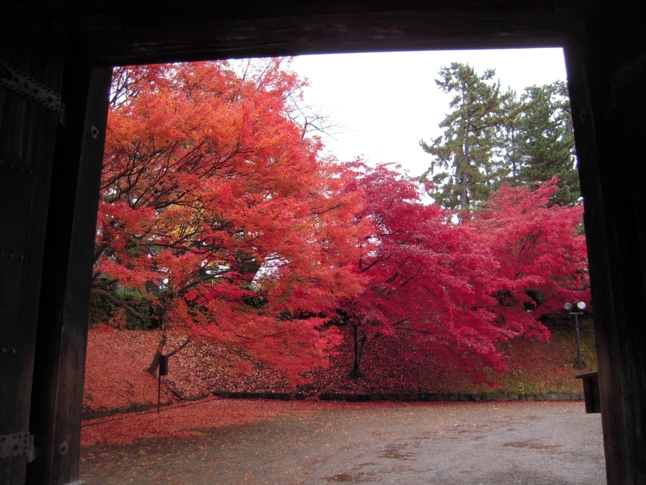
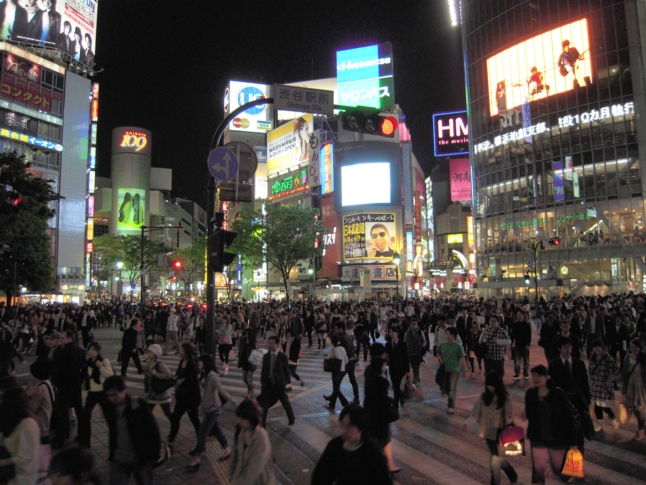
.jpg)
 former Japan National Railways (JNR) nationwide government-owned railways--now six separate regional privatized companies which cooperate with each other. Travelers on "temporary visitor" entry status to Japan should consider purchasing a Japan Rail Pass and will likely save money if they plan to travel by rail throughout Japan. Visitors entering Japan on visas for stays longer than 90 days (e.g., employees, missionaries, students, and English teachers) are, unfortunately, not eligible. Japan Rail Pass is available for 7, 14 or 21 consecutive days from the day you designate when you pick the pass up in Japan.
former Japan National Railways (JNR) nationwide government-owned railways--now six separate regional privatized companies which cooperate with each other. Travelers on "temporary visitor" entry status to Japan should consider purchasing a Japan Rail Pass and will likely save money if they plan to travel by rail throughout Japan. Visitors entering Japan on visas for stays longer than 90 days (e.g., employees, missionaries, students, and English teachers) are, unfortunately, not eligible. Japan Rail Pass is available for 7, 14 or 21 consecutive days from the day you designate when you pick the pass up in Japan. 




 ng JR's dedicated website described above, you can also book reserved seats, up to 30 days in advance of the train travel date, on the same website. Once in Japan, before you board your train, pick the reserved seat ticket up at JR stations using a JR Automated Ticket Machine. Select "receive reserved seat ticket reserved via website," scan the JR Rail Pass QR code (or key in your pass number), and key in your passport number. The advantage of online reservations is that you can cancel a previous reservation online and change to another specific train online, so long as you cancel before the train departure time.
ng JR's dedicated website described above, you can also book reserved seats, up to 30 days in advance of the train travel date, on the same website. Once in Japan, before you board your train, pick the reserved seat ticket up at JR stations using a JR Automated Ticket Machine. Select "receive reserved seat ticket reserved via website," scan the JR Rail Pass QR code (or key in your pass number), and key in your passport number. The advantage of online reservations is that you can cancel a previous reservation online and change to another specific train online, so long as you cancel before the train departure time.  cy in Japan. The green sign at left (with figure in reclining seat) designates a reserved ticket office. Due to automation, many smaller stations don't have a manned reservation window, but will have a "video teller" type of assistance service on ticket machines.
cy in Japan. The green sign at left (with figure in reclining seat) designates a reserved ticket office. Due to automation, many smaller stations don't have a manned reservation window, but will have a "video teller" type of assistance service on ticket machines. .jpg) Some of the information may appear in ro-maji or in English, but don't count on it, so learning the Kanji for names of cities you'll be traveling to becomes helpful. Use the reserved seat ticket to determine your car and seat number, including where to stand on the train platform. You DO NOT insert the reserved seat ticket to get through the gate (just your Pass), but once seated and the train is moving, have your reserved seat ticket handy in case a conductor comes around asking to inspect everyone's ticket. You usually only need to show the conductor the reserved seat ticket and not the Pass. (He can tell by price of '¥***' that you're a pass holder.) Note: In nearly all of JR East and West territory, train conductors rarely check for tickets unless their handheld electronic device shows them a seat is occupied for which a reserved ticket has not been purchased. Pre-pandemic other JR companies did not seem to be as sophisticated and checked for reserved seat tickets more often.
Some of the information may appear in ro-maji or in English, but don't count on it, so learning the Kanji for names of cities you'll be traveling to becomes helpful. Use the reserved seat ticket to determine your car and seat number, including where to stand on the train platform. You DO NOT insert the reserved seat ticket to get through the gate (just your Pass), but once seated and the train is moving, have your reserved seat ticket handy in case a conductor comes around asking to inspect everyone's ticket. You usually only need to show the conductor the reserved seat ticket and not the Pass. (He can tell by price of '¥***' that you're a pass holder.) Note: In nearly all of JR East and West territory, train conductors rarely check for tickets unless their handheld electronic device shows them a seat is occupied for which a reserved ticket has not been purchased. Pre-pandemic other JR companies did not seem to be as sophisticated and checked for reserved seat tickets more often.
.jpg)


 end Jorudan's Japan Transit Planner. This intuitive webpage allows Ro-maji searches for specific city points, dates and times, and then displays multiple suggested choices, with Japanese also appearing in the results display. It allows narrowed search parameters at the top of the main page for Rail Pass Search, helpful if you'll be using a JR Pass. The JR Rail Pass is not valid on Nozomi or Mizuho (Kyushu) trains without extra charges, but is valid without extra charge on all other Shinkansen. This search engine webpage is far more user-friendly than JR Group's Cyberstation discussed below.
end Jorudan's Japan Transit Planner. This intuitive webpage allows Ro-maji searches for specific city points, dates and times, and then displays multiple suggested choices, with Japanese also appearing in the results display. It allows narrowed search parameters at the top of the main page for Rail Pass Search, helpful if you'll be using a JR Pass. The JR Rail Pass is not valid on Nozomi or Mizuho (Kyushu) trains without extra charges, but is valid without extra charge on all other Shinkansen. This search engine webpage is far more user-friendly than JR Group's Cyberstation discussed below.  ld, and range in price from about ¥400 for a small print version to about ¥1,000 for the deluxe full-sized version. As people go digital, I've seen less and less of these for sale in recent years. I've purchased them at kiosks located adjacent to the JR East Travel Service Center at both Narita and Haneda airports. The jikokuhyou are only in Japanese, but with a little practice, relatively easy to use if you know the kanji for main cities. The full size version, which all train station ticket offices keep on hand, also lists cities in hiragana. Hints for reading jikokuhyou are discussed below. Another interesting thing about jikokuhyou is that virtually all public transportation, including buses and domestic air routes are listed in them. JR Train schedules usually remain unchanged for one year, from April 1 to March 31 of the following year (this interesting fiscal year is also almost always followed by companies and schools in Japan.) Usually the only exception is seasonal tourist trains that are added to the base schedules.
ld, and range in price from about ¥400 for a small print version to about ¥1,000 for the deluxe full-sized version. As people go digital, I've seen less and less of these for sale in recent years. I've purchased them at kiosks located adjacent to the JR East Travel Service Center at both Narita and Haneda airports. The jikokuhyou are only in Japanese, but with a little practice, relatively easy to use if you know the kanji for main cities. The full size version, which all train station ticket offices keep on hand, also lists cities in hiragana. Hints for reading jikokuhyou are discussed below. Another interesting thing about jikokuhyou is that virtually all public transportation, including buses and domestic air routes are listed in them. JR Train schedules usually remain unchanged for one year, from April 1 to March 31 of the following year (this interesting fiscal year is also almost always followed by companies and schools in Japan.) Usually the only exception is seasonal tourist trains that are added to the base schedules. Train names are at the top of each column. Hayate 90 is the one we'll look at. It is the third column over from the right-hand margin. Military time is used in Japan.
Train names are at the top of each column. Hayate 90 is the one we'll look at. It is the third column over from the right-hand margin. Military time is used in Japan. Station Names All rail and subway stations display station names in both Japanese and Roman letters on their platforms. A station's name is in the center of the signboard, in large letters; the names of the previous station and the next station are at the bottom of the signboard, in smaller letters.
Station Names All rail and subway stations display station names in both Japanese and Roman letters on their platforms. A station's name is in the center of the signboard, in large letters; the names of the previous station and the next station are at the bottom of the signboard, in smaller letters.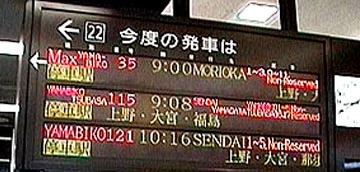
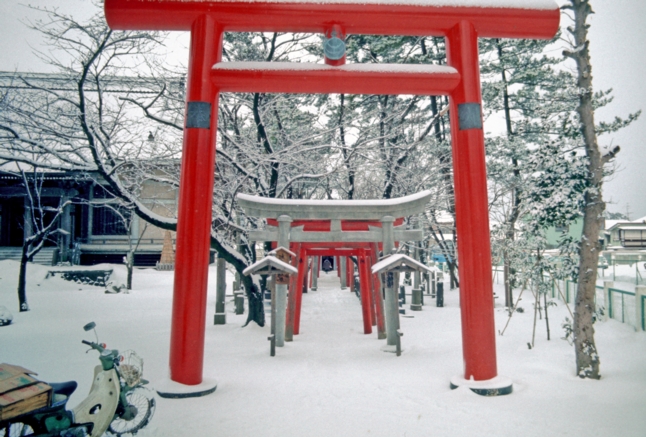
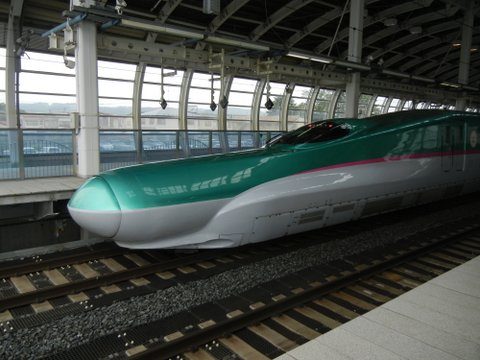
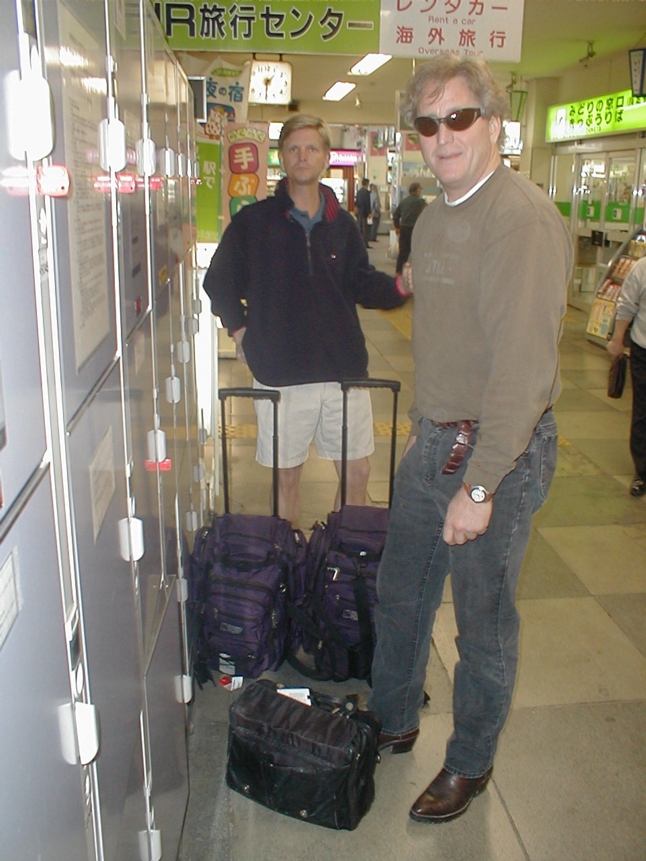
.JPG)
.JPG)

